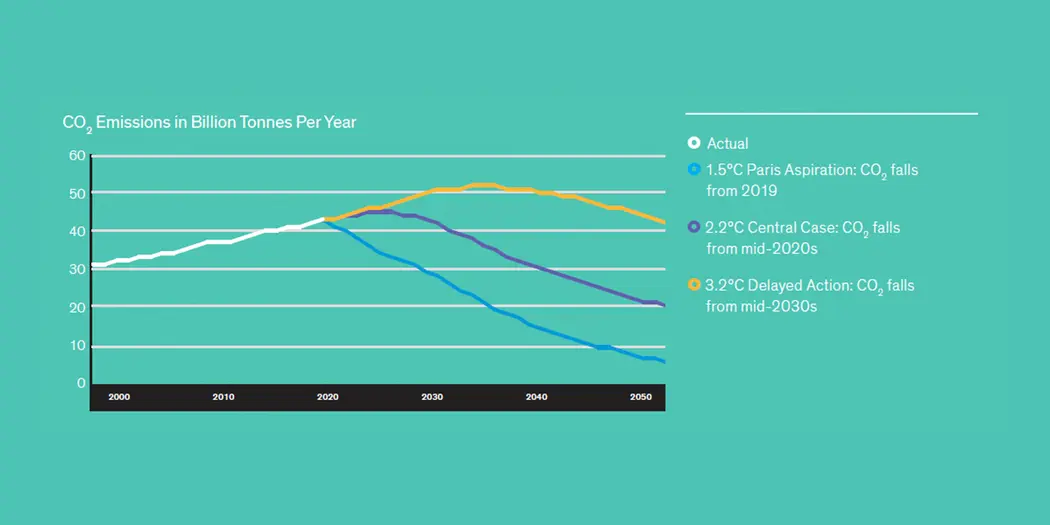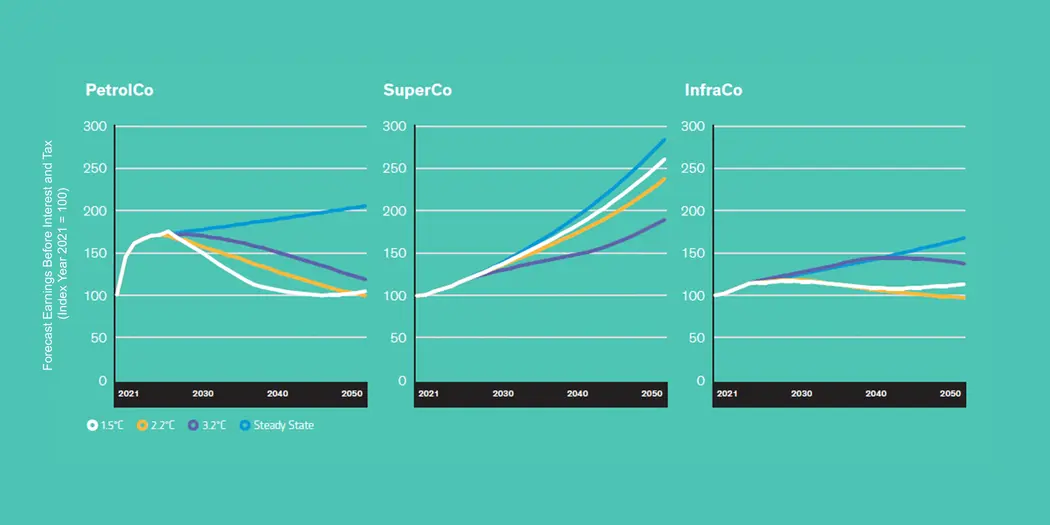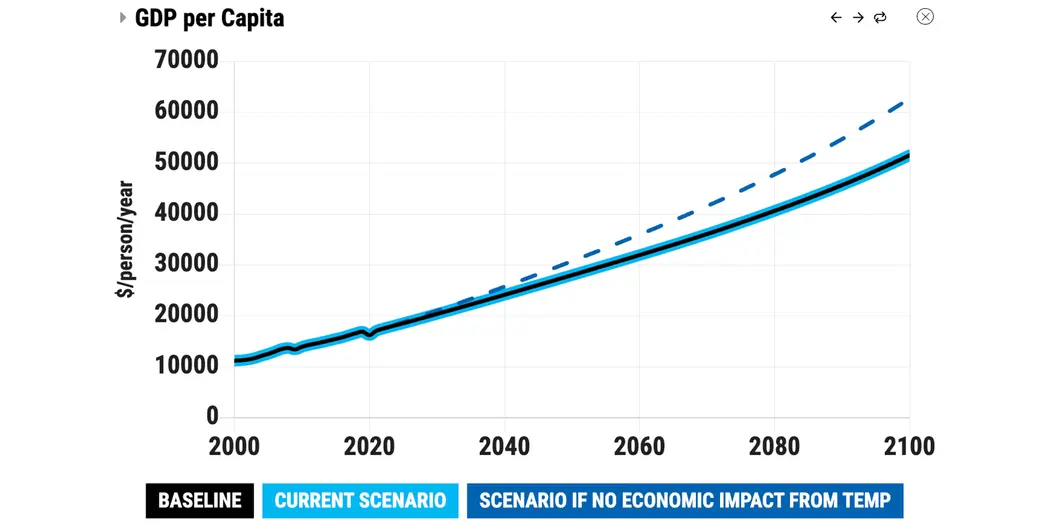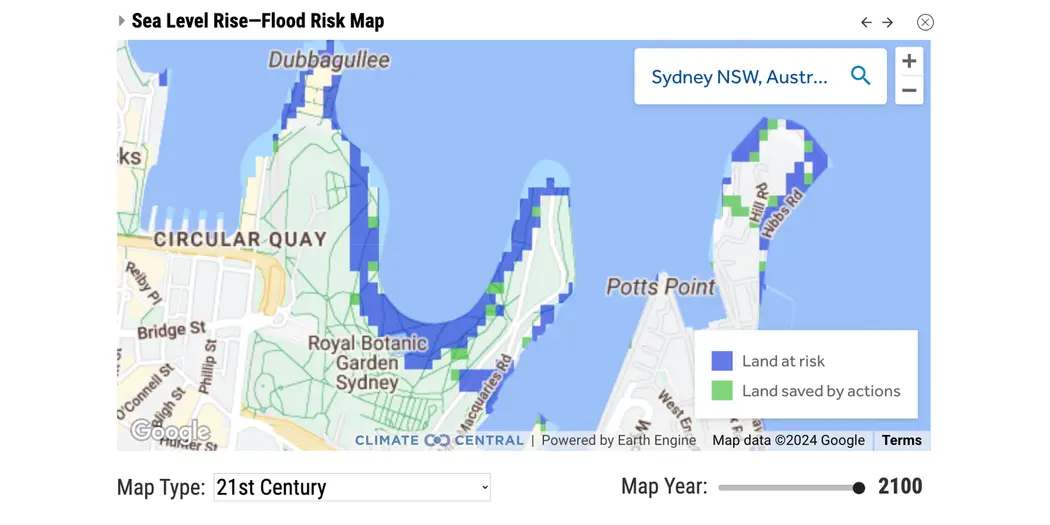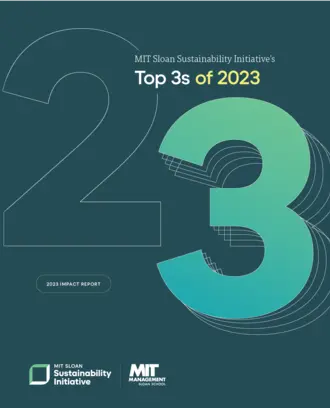MIT Sloan Sustainability Initiative
Climate Change
Possible Futures: How En-ROADS Can Help Investors Quantify Climate Risks and Opportunities
The Australian Equities Team at AllianceBernstein is using En-ROADS to help companies and investors perform the scenario analysis required under TCFD.1
When Roy Maslen, Chief Investment Officer of Australian Equities at AllianceBernstein (AB Australia) first experienced an En-ROADS Climate Workshop with the MIT Climate Pathways Project in late 2020, he had definitely done his homework.
“I didn’t come in cold. I came in with a lot of questions,” Maslen said.
The veteran investor independently explored the En-ROADS climate solutions simulator, co-developed by Climate Interactive and the MIT Sloan Sustainability Initiative, before joining other investors, philanthropists, foundation staff, and private wealth managers to collectively use it for testing solutions that could meet the Paris goals. This group experience, led by John Sterman and Jason Jay from MIT Sloan, left Maslen eager to explore En-ROADS even further.
“The whole workshop experience really brought En-ROADS to life,” Maslen said, “and it opened our eyes to its potential application for investors.”
At AB, a global asset management firm providing investment management and research services, Maslen has to think about climate change, and the risks and opportunities it poses, a lot. Noting that climate change is complex, accelerating, and nonlinear, he says it’s just the kind of thing that markets find hard to price.
“With the climate, you can’t just look at the past to see what the future might look like,” Maslen said.
The Need for Scenario Analysis
While AB Australia is confident that a warmer world could impact the valuation of many companies, the exact future global average temperature is uncertain. That's where scenario analysis comes in. AB Australia uses data to develop a range of plausible scenarios for what might happen, and then uses those scenarios to better understand how industries and companies might be affected and what can be done to mitigate risks and limit negative effects. Essentially, scenario analysis helps AB Australia fulfill its mission.
“We’re here to make money for our clients, and we think we can do a better job of that if we understand the risks and opportunities that climate change creates,” Maslen said.
As AB Australia tells it, the need for scenario analysis is stronger than ever, with many governments and 1000+ companies announcing net zero emissions goals, and many striving to comply with the Task Force on Climate-Related Financial Disclosure (TCFD) framework1–the latter of which requires climate scenario analysis. Maslen says this is where En-ROADS fits in nicely.
“En-ROADS is a really powerful tool to help companies and investors conduct the scenario analysis required under TCFD1,” he said. “I quickly latched onto it as being an excellent tool for our purposes.”
En-ROADS is a really powerful tool to help companies and investors conduct the scenario analysis required under TCFD.
Maslen, who has been investing in equities for 20 years, credits the En-ROADS Climate Workshop as being the springboard for redesigning the way his team analyzes climate-related financial risk. AB Australia now uses a four-step approach to climate change scenario analysis.
1. Develop Robust Scenarios
Using En-ROADS, the team combines and collates climate science [(e.g. from MIT, Columbia, International Energy Agency (IEA), Intergovernmental Panel on Climate Change (IPCC)] and their own fundamental research (e.g. evolution of energy markets, impact of new technologies) to develop custom, proprietary scenarios for different decarbonization outcomes, leading to different future temperatures. Maslen credits En-ROADS for its analytical rigor around climate science and system dynamics, but also for its flexibility, which allows the team to enter their own inputs and get very detailed outputs they can use to drive their own model.
AB's climate scenarios, from "Paris Aspiration" to "Delayed Action"
Credit: MIT and AB
2. Assess Climate Impacts on Companies
Based on the net present value of long-term (to at least 2050) discounted cash flows, the team next quantifies a company’s Climate Value at Risk (CVaR) for each scenario, and compares results to a “steady state,” where climate change stops today. This shows how a company’s earnings could change under different temperatures. The team has applied this approach across stocks in the S&P/ASX 200, finding that the Australian equities market is, overall, likely to perform better at lower temperatures, but Maslen notes that impacts varies from company to company. For each company the team looks at individual business segments, not only to determine those that might get hurt under each scenario, but also those that might win out.
Three companies’ (actual names disguised) earnings differ based on different climate scenarios
Credit: Company Reports and AB
3. Add Investment Value through Corporate Engagement
As companies begin to align reporting with TCFD recommendations1 and align with global regulations on climate disclosure, Maslen says they’re eager to learn about investor perspectives on climate-related risk. By engaging with corporates, the team can gain new insights valuable to investors, while simultaneously encouraging companies to develop better climate risk management strategies. Maslen says a key issue is how climate change impacts GDP and therefore company valuations. He observes that many companies work under the assumption that climate change will not impact GDP. Maslen credits the En-ROADS economic damage feature with helping AB Australia to get companies to think about climate risks and opportunities in a new way.
En-ROADS baseline scenario for climate impacts on GDP per capita at 3.3°C of warming
Credit: Source: Climate Interactive
4. Quantify–Don’t Side-Step–Climate Risk
The team uses CVaR to inform climate risk-aware stock valuations, investment time horizons, and portfolio construction. Their approach doesn’t exclude stocks because of the industry (e.g., oil and gas); instead, they adjust stock valuations to reflect climate-related risks and opportunities. The team’s approach aims to help investors plan for changes in share prices before they are reflected in the market by, for example, adjusting a stock’s valuation to forecast how it might trade on a structurally lower multiple in the future. Finally, the team uses CVaR to enhance portfolios by, for example, assessing a portfolio’s risk and return characteristics to determine if too large a share of the risk is due to correlated climate-related risks.
Risks and opportunities: markets don’t yet efficiently price all climate-related risks and opportunities
An AB Australia-MIT Reunion
In the summer of 2023, nearly three years after the original En-ROADS workshop, Maslen reached back out to Sterman and Jay, eager to show the pair what he and his team had done with the tool. They were both blown away.
“Other transition-risk analyses typically use off-the-shelf scenarios from the International Energy Agency or Intergovernmental Panel on Climate Change,” Jay said. “The Australian Equities Team at AllianceBernstein has gone far beyond any generic approach, using En-ROADS to create customized scenarios that include all the nuances uncovered through their research.”
Maslen believes scenario development is where organizations can get stuck. They can’t develop any they’re fully comfortable with. He says companies often hire an expert who will sell them some scenarios, but they won’t always resonate.
“The ability to change scenarios [with En-ROADS] so that they make sense to you is really powerful," Maslen said.
Sterman was particularly impressed by the practical application of En-ROADS. While he uses En-ROADS for a transition-risk activity with MBA and Executive Education students at Sloan, AB Australia’s use-case was on another level.
“The Australian Equities Team at AllianceBernstein has transformed climate risk analysis using En-ROADS from a thought-provoking activity into a real-world application with the potential for significant impact,” Sterman said.
The Australian Equities Team at AllianceBernstein has transformed climate risk analysis using En-ROADS from a thought-provoking activity into a real-world application with the potential for significant impact.
Visualizing Impacts Tied to Scenarios
In addition to the economic damage feature that shows the climate impact on GDP, Maslen says other impact visualizations in En-ROADS can be helpful.
“Flooding is an important risk for banks and insurers. With En-ROADS, we can look at the amount of flooding in individual parts of Australia,” Maslen said. “There are other websites that show this data, but what’s powerful here is that it’s actually tied to the scenario.”
Map of land at risk of flooding from sea level rise and the land save by action in Sydney, Australia
Credit: Climate Interactive
In regards to land use change, he finds En-ROADS helpful for assessing government goals.
“If I think about the Australian Federal government’s goals for emissions, they include going from releasing carbon dioxide from the land to effectively making it a sink,” Maslen said. “It’s a substantial amount of carbon, so it’s important to have a tool like En-ROADS to integrate this dynamic into our scenario analysis.”
The Global Perspective Matters
Being a global model, En-ROADS users sometimes wonder how to apply it on a national, regional, local, or company level. For Maslen, the practical application is clear.
“Global warming is a global phenomenon, so you need to have a global perspective to add up all the activity in the world and how that drives temperature,” he said.
He stressed the value in using En-ROADS to narrow down to a single scenario for, say, 1.5°C of warming, versus looking at the many scenarios that a body like the Intergovernmental Panel on Climate Change (IPCC) offers, and for good reason:
“If I talk to an oil and gas company, out of the range of possible scenarios, they often gravitate to picking the one that uses the most oil and gas,” Maslen said.
Doing this could allow the company to claim they’re 1.5°C aligned, but only because they’re picking the one scenario where a lot of oil and gas is being used.
“Simplifying it down to the single mostly likely 1.5°C scenario is a huge step forward for us as forecasters and researchers,” Maslen said.
He also says that, although AB Australia can’t use En-ROADS to just look at Australia, they still use it to form a worldview from which they can extrapolate.
“When we forecast the amount of gas that will be produced in Australia, most of which currently goes to export as LNG, we think of it as the share of global gas demand. For each scenario we can determine global gas demand by employing En-ROADS and then based on our own fundamental research we form a view of Australia’s market share.” Maslen said.
Future Ambitions
In light of a major update to En-ROADS in the summer of 2023, Maslen says AB Australia is due for a refresh of their scenarios.
“Each time there’s an enhancement, it’s an opportunity for us to refine and refresh,” Maslen said.
At MIT, Sterman and Jay hope to use AB Australia’s work to improve the existing transition risk exercise used at Sloan, but are eager to find ways to increase its reach outside of the classroom. For example, AB Australia’s use of En-ROADS for scenario analysis could provide a concrete example to the TCFD1, leading to its potential elevation from a listed resource to a recommended tool for fulfilling scenario analysis requirements.
“The TCFD1 requirements include conducting scenario analysis. We believe En-ROADS is an excellent tool for corporates and investors to conduct insightful scenario analysis,” Maslen said. “From my perspective I think En-ROADS could help many organizations to effectively implement the TCFD1 framework. Personally, I think the TCFD1 should recommend En-ROADS as a research tool.”
In the meantime, Maslen continues to share the benefits of the climate solutions simulator. AB Australia has used it extensively and is transparent about their use of En-ROADS with their clients and companies. Maslen has already inspired a large materials company to use En-ROADS in a learning experience for staff, and a healthcare CFO to use it to develop custom scenarios. Just last month, Maslen showed it to a corporate head of sustainability who had not previously heard of it, but found it to be very sophisticated.
“I’ve opened a lot of doors to En-ROADS over the past three years. How many people have walked through them? I don’t quite know. But I’ve opened a lot.”
1The TCFD framework is now overseen by the International Sustainability Standards Board (ISSB) and has been incorporated into IFRS 1 and IFRS 2 standards that were released in 2023.

